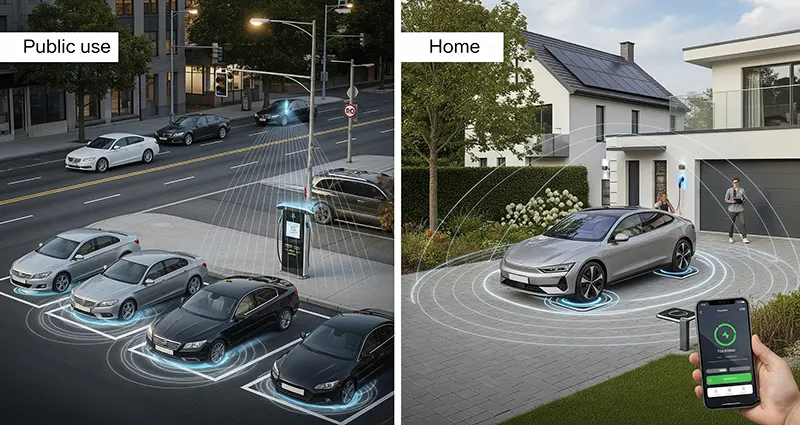As electric vehicles (EVs) become increasingly popular, the need for convenient and efficient charging solutions has never been greater. One of the most promising developments in this space is the advancement of wireless EV charging infrastructure for both public and home use. Wireless charging technology aims to simplify the charging process, enhance user experience, and accelerate the adoption of electric vehicles worldwide.
Understanding Wireless EV Charging
Wireless EV charging, also known as inductive charging, allows electric vehicles to recharge their batteries without the need for physical connectors or cables. This technology typically employs electromagnetic fields generated between a charging pad installed on the ground and a receiver coil installed in the vehicle. When the car is parked over the pad, power is transferred wirelessly, charging the vehicle efficiently and safely.
Recent Advancements in Wireless EV Charging Infrastructure
1. Increased Charging Efficiency
Early wireless charging systems suffered from energy losses and longer charging times compared to traditional plug-in chargers. However, advancements in coil design, magnetic alignment, and power electronics have significantly improved efficiency rates, now rivaling wired charging solutions. This leap in efficiency makes wireless charging more viable for daily use.
2. Standardization and Interoperability
To foster widespread adoption, industry stakeholders have been working on international standards such as the SAE J2954 standard for wireless power transfer. These standards ensure compatibility and safety across different vehicle models and charging stations, promoting a unified and user-friendly charging ecosystem.
3. Integration in Public Spaces
Numerous pilot projects have introduced wireless charging pads in public locations such as parking lots, shopping malls, and urban streets. These installations support convenient top-up charging, allowing EV owners to charge their vehicles effortlessly while running errands or during short stops. Some cities are exploring dynamic wireless charging embedded in roadways, enabling in-motion charging that could dramatically extend driving range.
4. Home Installation Solutions
Advancements have made wireless charging more accessible for home use with compact, easy-to-install charging pads. Furthermore, smart home integrations allow users to schedule charging to take advantage of off-peak electric rates, enhancing cost-efficiency. Home wireless charging is designed to be safe, automatic, and convenient, reducing the need for manual cable handling.
5. Improvements in Safety and User Experience
Modern wireless chargers include features such as foreign object detection, automatic alignment assistance, and overheat protection, ensuring safe operation. User interfaces also offer digital apps that monitor charging status and notify users upon completion, adding convenience and transparency.
Benefits of Wireless EV Charging Infrastructure
- Convenience: Eliminates the hassle of plugging and unplugging cables, especially beneficial during adverse weather conditions or for individuals with mobility challenges.
- Aesthetic and Spatial Advantages: Wireless pads can be seamlessly integrated into driveways, garages, and parking spaces without clutter.
- Enhanced Adoption: Simplified charging encourages more consumers to switch to EVs by removing barriers related to charging infrastructure.
- Urban Mobility Solutions: Public wireless charging supports shared and commercial EV fleets by reducing downtime and streamlining operations.
Challenges and Future Outlook
Despite promising advancements, wireless EV charging faces several challenges, including higher initial installation costs and the need for further efficiency improvements. However, ongoing research and development, combined with increasing government incentives, are helping to overcome these obstacles.
In the future, wireless charging could be integrated with renewable energy sources, smart grids, and vehicle-to-grid (V2G) technologies, creating a sustainable and interactive energy ecosystem. Additionally, dynamic wireless charging embedded in roadways may revolutionize long-distance travel by enabling continuous charging without stopping.
Wireless EV charging infrastructure advancements are poised to redefine the convenience and accessibility of electric vehicle charging for both public and home use. By enhancing efficiency, standardization, safety, and user experience, wireless charging solutions are becoming an integral component of the EV revolution. As the technology matures and deployment expands, consumers can look forward to a future where charging an EV is as effortless as parking it.
In summary, the development of wireless EV charging infrastructure for public and home use is accelerating rapidly, driven by technological innovation and increasing demand for seamless charging solutions. This evolution not only supports the growing EV market but also contributes to a cleaner and more sustainable transportation future.





